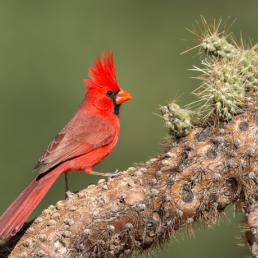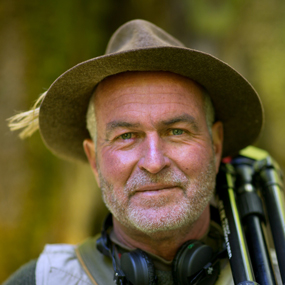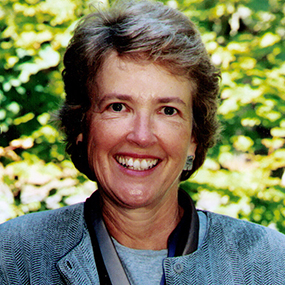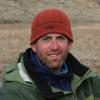

Join BirdNote tomorrow, November 30th!
Illustrator David Sibley and actor H. Jon Benjamin will face off in the bird illustration battle of the century during BirdNote's Year-end Celebration and Auction!
We may be more indebted to birds than we know. Acoustic ecologist Gordon Hempton explains: “I was curious about the human range of sound . . . it’s a perfect match for bird song,” he says. “If we hear bird song, then we’re also listening to an area that has food, water, and an extended favorable season long enough to raise the young off the nest . . . Bird song is the number one indicator of habitats prosperous for humans.”
The soundscape featured in this show was recorded by Gordon Hempton and provided courtesy of QuietPlanet.com.
BirdNote®
Listening for Bird Song
Featuring Gordon Hempton
Interview by Todd and Chris Peterson
This is BirdNote.
[Prairie morning birdsong with Eastern Meadowlark]
We may be more indebted to birds than we know. Gordon Hempton, the Sound Tracker, explains:
“Hearing is vital for all animals’ survival. But what is the ear listening to? So I was curious about the human range of sound…[we listen from the very low frequencies of 20 hertz to very high frequencies of 20 kilohertz. But we aren’t equally sensitive to all the frequencies.] There’s this narrow bandwidth from 2.5 to 5 kilohertz that are the resonant frequencies of our auditory canals where we have super-sensitive hearing. Somehow that bandwidth in our ancestors’ environment was listening for something which was essential for our ancestors to survive.”
“Well as it turns out, it’s a perfect match for bird song [birdsong]. Well why would our ancestors have to hear bird song? [And remember we’re super-sensitive, so why would they have to hear faint bird song, bird song coming over a long distance.] Well, we come from a nomadic ancestry, and if we hear bird song then we’re also listening to an area which has food, water and an extended favorable season long enough to raise the young off the nest.”
“Bird song is the number one indicator of habitats prosperous for humans.”
[Prairie morning birdsong]
The soundscape featured in today’s show was recorded by Gordon Hempton and provided courtesy of QuietPlanet.com.
###
Prairie morning birdsong with Eastern Meadowlark [2011.06.16] recorded by Gordon Hempton, of www.QuietPlanet.com
BirdNote’s theme music was composed and played by Nancy Rumbel and John Kessler.
Producer: John Kessler
Executive Producer: Chris Peterson
© 2013 Tune In to Nature.org July 2018 Narrator: Mary McCann
ID# hemptong-01-2013-07-15 hemptong-01Marantz V Track 80







